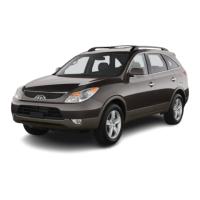
Do you have a question about the Hyundai 2010 Veracruz and is the answer not in the manual?
| Brand | Hyundai |
|---|---|
| Model | 2010 Veracruz |
| Category | Automobile |
| Language | English |
Explains the manual's layout, sections, and the importance of understanding warnings, cautions, and notices.
Details the unleaded fuel requirements, including octane rating and compatibility with alcohol or methanol.
Provides guidelines for safe vehicle operation, especially regarding cornering and avoiding rollovers.
Offers simple precautions for the first 600 miles to enhance performance, economy, and vehicle life.
Explains the purpose and function of the event data recorder (EDR) in capturing vehicle dynamics during crashes.
Lists and describes various warning and indicator lights found on the instrument cluster.
Details the components and controls located within the vehicle's interior cabin.
Identifies and describes the various controls and displays on the vehicle's instrument panel.
Illustrates and labels the key components located under the hood of the vehicle.
Explains the adjustments for front, 2nd row, and 3rd row seats, including manual and power seat features.
Covers the proper use, restraint system, warning lights, and precautions for seat belts.
Provides essential information on the proper installation and use of child safety seats and restraints.
Details the operation, components, and safety precautions related to the vehicle's air bag system.
Explains key operations, recording the key number, ignition key warnings, and handling restrictions.
Details smart key functions, locking/unlocking, and precautions for operation and battery replacement.
Describes operations for locking, unlocking, tailgate control, and alarm functions using the remote transmitter.
Explains the armed, theft-alarm, and disarmed stages of the vehicle's theft-alarm system.
Covers operating door locks from inside and outside the vehicle, including the central door lock switch.
Details the operation of the power tailgate, including safety precautions and non-opening conditions.
Explains the operation of power windows, including auto up/down and window lock functions.
Provides instructions for opening and closing the vehicle's hood, including safety warnings.
Details how to open and close the fuel filler lid, including refueling safety precautions.
Explains sunroof operation, including sliding, tilting, and automatic reversal features.
Describes how to store and recall driver seat, mirror, and steering wheel positions.
Explains the operation, conditions, warning sounds, and precautions for the rear parking assist system.
Details the use of hazard warning flashers for emergency stops and hazardous locations.
Covers battery saver function, headlight escort, rescue mode, and lighting controls.
Explains the operation of windshield and rear window wipers and washers.
Describes the operation of interior lights, including map, room, and luggage lamps.
Provides guidelines for exterior and interior care, including washing, waxing, and cleaning various surfaces.
Details the vehicle's emission control systems and precautions for inspection and maintenance.
Covers tire care, inflation pressure, tread wear, and wheel alignment and balancing.
Explains fuse panel locations, replacement procedures, and types of fuses used in the vehicle.
Covers radio operation, setup, volume, and controls for various audio sources like CD, AUX, USB, and iPod.
Provides information on RSE system setup, components, operation, and troubleshooting.
Covers essential pre-driving checks, including exterior, tires, fluid levels, and mirrors.
Explains the functions of different ignition switch positions and warnings related to key use.
Provides instructions for starting the engine, including precautions for normal and smart key starting.
Details automatic transaxle operation, ranges, and precautions for smooth and safe shifting.
Explains AWD operation, transfer modes, and precautions for driving in various conditions.
Covers power brakes, brake failure, parking brake operation, and ABS system.
Explains how to set, increase, decrease, temporarily accelerate, and cancel cruise control.
Offers driving suggestions to save money on fuel and reduce maintenance costs.
Provides advice for driving in hazardous conditions like snow, mud, ice, and sharp turns.
Offers tips for driving in snow, icy conditions, and explains the use of snow tires and tire chains.
Covers important points and safety rules for towing a trailer, including weight limits and hitching.
Explains how to determine correct load limits, including vehicle capacity, seating capacity, and cargo weight.
Defines terms related to vehicle weight ratings like GVWR, GAWR, and curb weight.
Illustrates and labels the key components located under the hood of the vehicle.
Emphasizes the importance of proper maintenance and recommends authorized Hyundai dealer service.
Provides a schedule of checks and inspections for owners to perform regularly.
Outlines normal and severe usage maintenance schedules based on mileage and time intervals.
Explains how to check engine oil level and the importance of regular oil and filter changes.
Details how to check coolant level, change coolant, and provides warnings regarding radiator cap and coolant.
Explains how to check brake fluid level and provides warnings about handling and quality.
Covers checking power steering fluid level and hoses, with cautions about pump operation and fluid types.
Provides instructions for checking and refilling the washer fluid reservoir, with warnings about coolant and freezing.
Details how to check the parking brake stroke and apply it correctly.
Explains the procedure for replacing the air cleaner filter and provides related cautions.
Provides instructions for inspecting and replacing the climate control air filter.
Covers blade inspection, replacement procedures, and cautions regarding cleaning and non-specified blades.
Offers guidelines for battery service, recharging, and warnings about battery dangers.
Covers tire care, inflation pressure, tread wear, wheel alignment, and tire replacement.
Explains fuse panel locations, replacement procedures, and warnings about fuse usage.
Explains the function and use of the hazard warning flasher for emergency situations.
Provides instructions on what to do if the engine stalls while at an intersection or crossing.
Guides on how to safely slow down, pull over, and change a flat tire.
Offers troubleshooting steps for when the engine doesn't turn over or turns over slowly.
Details the procedure for jump starting a vehicle with a discharged battery, including safety warnings.
Provides steps to take if the engine overheats, including checking coolant and drive belts.
Explains the TPMS indicators, malfunction warnings, and precautions for tire pressure maintenance.
Guides on how to change a tire with TPMS, including precautions and warnings about tire sealant.
Provides instructions and precautions for towing the vehicle, including AWD and 2WD towing methods.
Details how to install and remove the rear towing hook for emergency towing.
Explains the proper use of tie-down hooks for flatbed towing and warnings about improper use.
Lists the overall dimensions, tread, wheelbase, and bulb wattages for the vehicle.
Details tire specifications, wheel sizes, inflation pressures, and lug nut torque.
Lists recommended lubricants, fluids, and their capacities for engine, transmission, and other systems.
Explains the location and importance of the vehicle identification number (VIN) for registration and legal matters.
Describes the vehicle certification label on the driver's side center pillar, including the VIN.
Details the tire label on the driver's side center pillar for normal driving tire pressures.
Indicates the location where the engine number is stamped on the engine block.
Provides NHTSA regulations compliance and contact information for Hyundai regional offices.
Instructs on how to report vehicle safety defects to NHTSA and Hyundai Motor America.
Outlines the binding arbitration agreement for warranty claims and disputes.


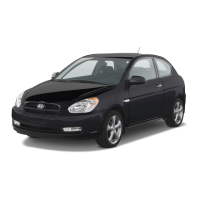
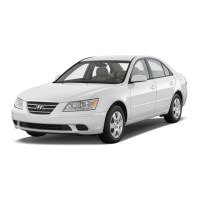
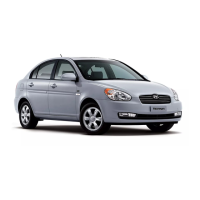


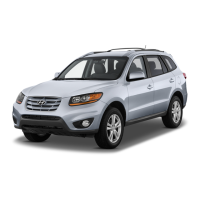

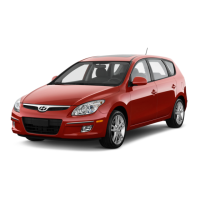
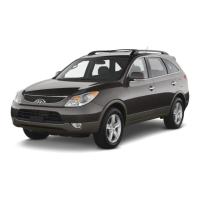
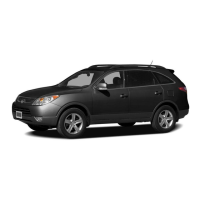
